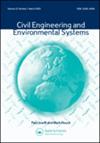避免天启:清晰和协作
IF 1.1
3区 工程技术
Q3 ENGINEERING, CIVIL
引用次数: 1
摘要
世界面临着由环境问题引起的严重问题,但世界末日的灾难并非不可避免。问题的产生主要是由于人类未能理解这些问题并采取集体行动来解决这些问题。因此,任何解决方案都必须解决人为因素。本文考虑了两点:缺乏清晰的思想、目标和行动,以及在所有层面上,特别是在各种规模的群体之间,不受约束的冲突的破坏性。第一个可以通过系统工程的学科来帮助,它旨在在复杂的情况下实现清晰度,第二个可以使用理解的清晰度来帮助团队互动,同时拥有合作和竞争的态度。讨论了实现清晰度的方法。举例说明了清晰是如何解决困难问题的,同时,在一些细节上,在一个重大的项目管理情况下,一个清晰的思维方法如何使通常竞争的团队以这样一种方式一起工作,他们必须同时合作和竞争,以取悦客户和所有人的共同利益。这是可以做到的,灾难是可以避免的。本文章由计算机程序翻译,如有差异,请以英文原文为准。
Avoiding apocalypse: clarity and collaboration
ABSTRACT The world faces grave problems stemming from environmental issues, but apocalyptic disaster is not inevitable. The problems arise primarily from human failure to understand the issues and act collectively to deal with them. Any solution must therefore address human factors. This paper considers two: a lack of clarity in thought, aims and action, and the destructive nature of unconstrained conflict at all levels, particularly between groups of all sizes. The first can be helped by the discipline of systems engineering which aims to achieve clarity in complex situations, and the second can use the clarity of understanding to help groups interact while having an attitude of both collaboration and competition. Means of achieving clarity are discussed. Examples demonstrate how clarity has cut through difficult problems and also, in some detail, how, in a major project management situation, a clear-thinking approach brought normally competing groups to work together in such a way that they had to simultaneously collaborate and compete to the delight of the clients and the mutual benefit of all. It can be done and catastrophe avoided.
求助全文
通过发布文献求助,成功后即可免费获取论文全文。
去求助
来源期刊

Civil Engineering and Environmental Systems
工程技术-工程:土木
CiteScore
3.30
自引率
16.70%
发文量
10
审稿时长
>12 weeks
期刊介绍:
Civil Engineering and Environmental Systems is devoted to the advancement of systems thinking and systems techniques throughout systems engineering, environmental engineering decision-making, and engineering management. We do this by publishing the practical applications and developments of "hard" and "soft" systems techniques and thinking.
Submissions that allow for better analysis of civil engineering and environmental systems might look at:
-Civil Engineering optimization
-Risk assessment in engineering
-Civil engineering decision analysis
-System identification in engineering
-Civil engineering numerical simulation
-Uncertainty modelling in engineering
-Qualitative modelling of complex engineering systems
 求助内容:
求助内容: 应助结果提醒方式:
应助结果提醒方式:


